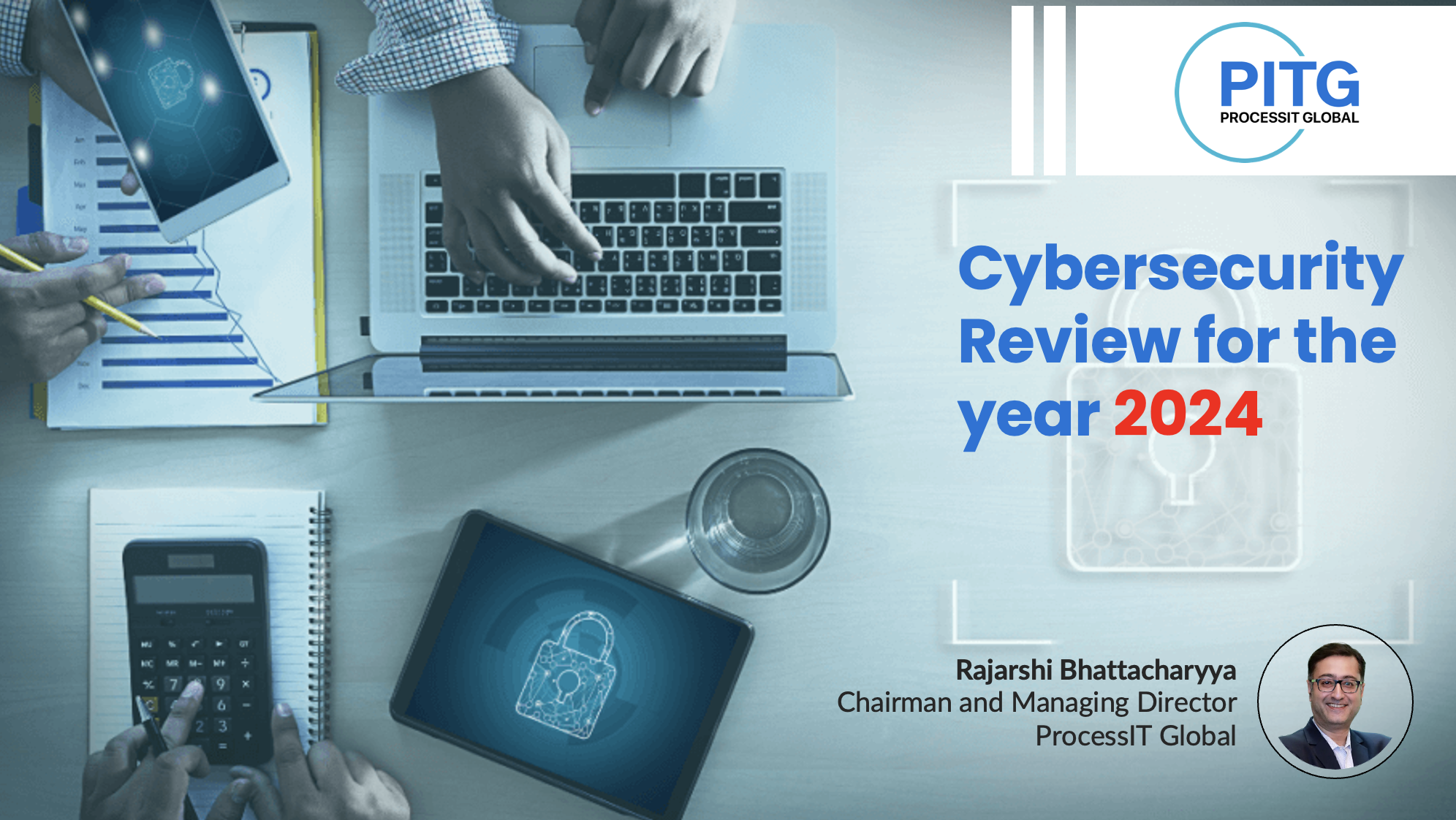Cybersecurity Review for the year 2024 - Rajarshi Bhattacharyya, Co-Founder, Chairman and Managing Director, ProcessIT Global

We are coming to the end of 2024, that
time of the year to reflect on the developments and challenges that defined the
cybersecurity landscape across the last 12 months. The cybersecurity domain underwent a significant
transformation with cyber threats becoming more sophisticated and complex, in
recent days. More advanced AI-driven
tools and complicated social engineering tactics were employed by
cybercriminals to achieve their goals.
Adversaries operated at record AI speed, regulatory agencies began to implement
stringent compliance measures, and technological innovation increased with
advanced security controls leveraged to keep threats at bay. Here’s a capture of the developments and challenges in the cybersecurity
domain that defined the year.
AI revolutionized
cybersecurity
In
2024, AI technology developed further to enhance advanced threat detection and
response giving rise to sophisticated AI-driven security tools. The integration of AI and ML technologies in
the cybersecurity domain enhanced defensive capabilities and offered strategic
advantages for talent and resource optimization reducing the workload on
security teams. Besides enhancing threat detection and response times the
complexity of cyber threats was addressed as well. AI solutions were also useful in handling large
volumes of data across numerous devices connected to the network. Unfortunately, the same AI technology was
exploited by threat actors too in developing AI-powered attacks such as
phishing, deepfake, ransomware, Denial of Service, Advanced Persistent Threats,
and many more presenting new challenges for cybersecurity teams.
Regulatory landscape intensely
deepened
The
year saw significant new cybersecurity rules and regulations in large economies
across the globe. As a global leader in
the digital landscape with 936 million internet subscribers (till Dec 2023,
TRAI), the Indian government recognizes the critical importance of a secure
digital landscape and has been implementing strong policies to protect online
users. In addition to several earlier
regulations implemented earlier, in November 2024, the Department of
Telecommunications introduced Telecom Cybersecurity Rules, 2024 which aims to
protect India’s communication networks and services. It announced strict measures including
specified timelines for telecommunication entities to report any incident.
These Rules demonstrate the seriousness of the Indian government about cyber
security and the plan to modernize and improve the cybersecurity framework for
India’s telecom infrastructure. Additionally, the focus was on strengthening
cybersecurity and safeguarding user data while ensuring service integrity.
Attacks on the cloud, mobile,
and IoT were high
With
people relying on mobile apps and cloud, and other smart devices,
cybercriminals attempting to hack their privacy are also increasing
exponentially. The number of people accessing the internet with a mobile device
increased significantly and a sizable percentage of internet traffic was also
generated by mobile devices. In 2024,
the attacks grew on mobile, cloud, and IoT devices. The OT and cyber-physical systems which were
earlier isolated from the Internet are now integrated into enterprise networks,
with an increasing likelihood for cyber threats to thrive. According to Zscaler ThreatLabz 2024 Mobile,
IoT, and OT Threat Report, where a dataset comprising over 20 billion
threat-related mobile transactions and associated cyber threats, between June
2023 to May 2024, India tops the list for mobile malware attacks globally
surpassing the United States and Canada.
Global shortage of
cybersecurity talent
In
2024 the cybersecurity skills gap widened with several security professionals
lacking the skillsets to manage the rapidly growing cyber threats. According to the World Economic Forum, the
global talent shortage across nation-states and industries could reach 85
million by 2030 causing approximately USD 8.5 trillion in unrealized annual
revenue. Currently, there is an urgent
requirement of 4 million professionals to plug the talent gap in the global
cybersecurity industry. The recent
high-profile, AI-enabled attacks are a wake-up call for organizations to take
cybersecurity seriously. Traditionally
high level of job satisfaction found in the cybersecurity sector is down
4%. Organizations addressed the skill
shortage by partnering with managed security services and investing in targeted
training and upskilling of employees.
Additional AI and automation helped to fix the skills gap partially.
Sharp rise in third-party data
breaches
With
the fast-expanding threat landscape across the year, third-party exposure was a
growing vulnerability for organizations. Cybercriminals identified third-party
vendors with weaker security and targeted them to reach their primary targets. A recent IBM Cost of a Data Breach Report
revealed only 42% of companies discover breaches through their own security
teams highlighting the third-party risks that organizations are blind to. These breaches can have dire consequences
leading to financial losses, operational disruptions regulatory penalties, and
more. Some of the third-party data
breaches in 2024 included Infosys McCamish Bank of America Data Breach,
Fortinet Data Breach, Toyota Data Breach, Truist Bank Data Breach, Shopify Data
Breach, and American Express Data Breach, among others. Third-party risk management has become a
necessity in today’s rapidly evolving business world.
The
cybersecurity landscape stands at the threshold of a paradigm shift today. In today’s fast-changing digital age,
securing our digital assets is more critical than ever. Going forward, organizations have to deploy a
proactive approach to navigate the complex cybersecurity landscape and ensure
their digital assets are safe from both internal as well as external attacks.



